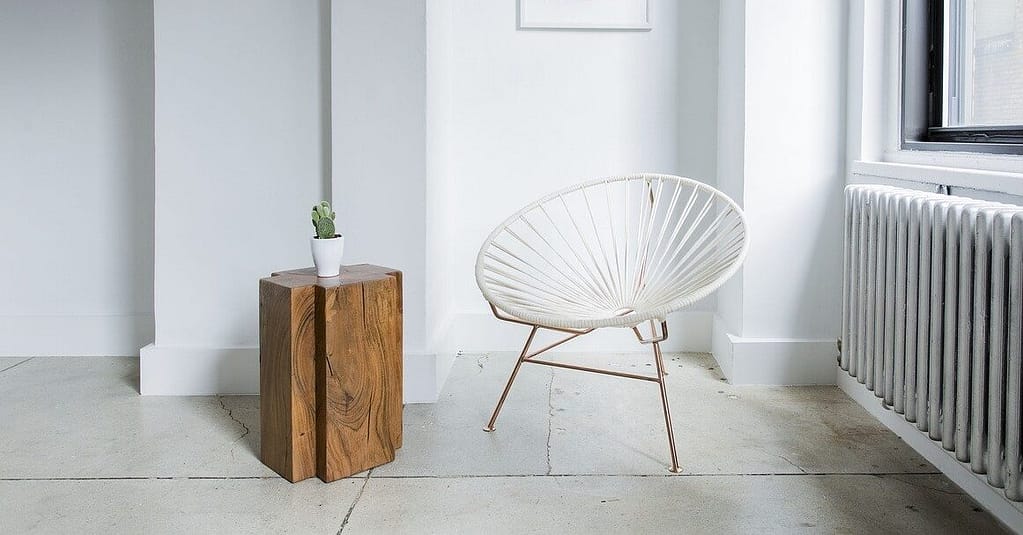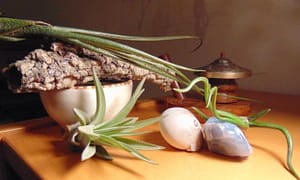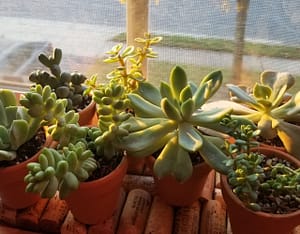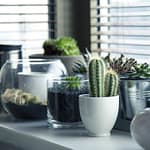
Many of us became first-time plant parents from receiving a plant gift from a friend, family member, co-worker, or neighbor. It may have come from a cutting off of a mother plant or from a greenhouse, florist, or retail store. Some of us may have decided, on our own, to purchase our first plant. No matter the case, being a first-time plant parent is exciting, calming, and exhilarating…for some of us. For others, it is frustrating and discouraging. Perhaps, the interest being a plant parent isn’t there and it was trust on us.
If you recently became a first-time plant parent and struggle with knowing how to properly caring for your new plant, don’t give up. Here are 5 simple steps to help guide you towards plant care success.
Step 1 – Identify your plant
Identify your new plant. What type of plant do you have? What is its natural origin or habitat? Does it originate from a tropical or arid region? Understanding this is a good start.
If you don’t know what plant you have, simply ask. Start with where you bought the plant or who gave it to you. If the plant was purchased, it should have a care tag or label with the plant’s scientific or common name.
Step 2 – Learn about your plant’s natural habitat
Learning about your plant’s natural habitat should better help you understand water and light requirements, growth behavior, and temperature and air moisture. It also helps to know the right type of soil (moisture retention, well draining, or something in between), and how dry or moist the soil should be.
For example, desert plants don’t like its roots in moisture-retaining soil nor likes to be watered often. Cactuses (or cacti) and succulents are among those desert plants that holds its own water reserve within the stem and leaf body. Too much water will cause the whole plant to split, rot, and die. In this case, minimal watering and fast-draining soil that dries completely between watering works best. On the other hand, tropical plants needs more water and moisture retaining soil. The soil should still drain well. Every tropical plant is different and have different watering needs.
Some plants are sold with with care tags that have good instructions and some don’t. If there is any useful information on the tag, keep it for reference. You should still seek out additional care information. I typically search on the Web or talk to people who have experience with that plant. YouTube is also a good source. A couple of my favorite sources are Summer Rayne Oakes of Homestead Brooklyn and Hilton Carter (aka “The Plant Doctor”). The both have great YouTube video for easy plant care solutions. There are other great sources but beware. Some informational sources may be inaccurate, confusing, and/or conflicting. Some may also assume that you are an experience plant enthusiast.
Step 3 – Replicate the perfect plant habitat in your home
Based on Step 2, you can replicate the plants natural habitat in your home. “Perfect” is only relative. With the information you now have from your research, determine how much natural habitat you can mimic. Note what may be a challenge and find some alternative solutions. Most common house plants adjust and adapted to your home’s environment. You just need to make sure that you have correct lighting and water. As for light, observe much (or lack of) light does each room get at different times of the day (morning, mid-day, and afternoon). Consider putting your plant in the room that meets the best light requirement. Plants also adjust to light situations; however, growth behavior may vary. If you home is pretty dark, consider buying grow light bulbs that fit your regular light fixtures.
You should already know the temperature range (warmest to coldest) based on your thermostat setting in the winter and summer months. The basic thing to remember, if your room feels comfortable to you (without a jacket or blanket), it is probably okay for your plant. Most common houseplants grow well in average room-temperature (70 to 75 degrees fahrenheit).
As for humidity, you should also be able to feel how humid or dry your home is, especially from season to season. If not sure, you can buy a room thermometer/hydrometer gadget. If your home is too dry for your plant, you can use a cold-mist humidifier or set your plant on a tray of pebbles and water. Make sure the water is just below the surface of the pebbles.
Step 4 – Recognize your lifestyle
You should ask yourself, “what is my current lifestyle? Does a plant fit into it? We all go about our lives not paying much attention to how busy we are. We over look stuff we feel is not important or top priority. So things fall off our radar, like needing to water a plant. I know a plant is not a pet dog or cat, but it is a living thing that requires care and nurturing. Yes, a plant living in your habitat complete relies on you for its survival. It is unrealistic to think that a plant taken from its natural habitat or cultivated in a greenhouse can survive on its own.
Step 5 – Recognize your own human tendencies
We should recognize our human tendencies when it comes to plants. Over-watering, under-watering, or forgetting to water our plant may have to do with our tendencies. Do you pay too much attention to your plant or not enough attention? If so, ask yourself “why?” Most plants are okay being left alone in that perfect spot you chose in your room. Giving it the right amount of light and water with proper fertilizing is good enough. Too much fussing, touching, and adjusting is not necessary and can do harm. But at the same time, it shouldn’t be ignored altogether. Plants will tell you if you go it right or not. They tell you simply by its appearance. So, recognizing and adjusting your human tendencies may make all the difference for your plant.
One tip for overcoming the tendency to over- or under-water your plant is to have a watering schedule. Pick a day, starting with once per week, to water. Before you water, always check the soil to see how damp or dry it is. Stick you finger into the soil and feel for dampness on the surface to approximately 1 inch below the soil surface. If the soil is still quite damp, you should skip watering and wait a few more days. Adjust your watering schedule according to how quickly the soil dries out. You can also have a schedule for misting your plant.
If you are a plant-parent to a cactus, the watering schedule will be totally different from a tropical plant. You certainly don’t need a misting schedule.
I hope you find these steps useful. Being a successful plant-parent does take work and being attentive on your part but it doesn’t need to be complicated.
If you are thinking about expanding your plant collection but want to know what plants are low maintenance, read the blog article, “Easy-care Plants: A Short List“. I wish you much success in your plant parenting journey.







